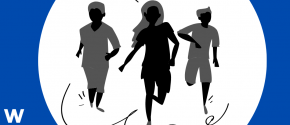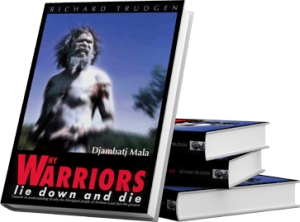Under the original Australian Yolngu law, nobody should do anything to kill anyone else. This includes giving someone a substance or using a weapon that leads to someone’s death. This is classed as murder by Yolngu.
Euthanasia has become topical again in the Northern Territory. It was briefly legalised during the mid-1990s, Dr Philip Nitschke was the doctor advocating for it and performing the lethal injections. Significantly, one of the words for ‘sorcery’ in Arnhem land, is ‘ṉyinyṉyiny’, which sounds a lot like ‘nitch nitch’ in English.
Contrary to mainstream opinion, sorcery is totally illegal under the original Madayin system of law. It is a fact of life, that some people live life according to the laws of the community they live in and some people will break the laws of their own community. And that is how it is in Yolngu communities as it is in all communities.
There is a lot of confusion around it now because some contemporary Indigenous people think it’s an active part of their culture. Some even play games saying they’re going to blow didgeridoos against a football club or something under the guise of sorcery, but the act of sorcery is illegal under Yolngu Madayin law. The idea that it was a legal part of traditional Aboriginal culture and law is the construction by white settlers who named what they saw of Aboriginal culture in their own language English.
So to some Yolngu people, the idea of euthanasia is bound up with Dr Philip Nitschke or Dr Nitch nitch, the sorcerer. To others the idea that someone, especially a doctor could kill a person fill them with fear. During the time it was legal in the NT a number of Yolngu walked out of hospital in fear of their lives, others refused medicine in fear it was poison.
Yolngu have a form of euthanasia
Yolngu however, do have a form of euthanasia that is self-controlled, called dhä-mukmaram, to ‘close your mouth to food and water’.
After declaring the fact to their whole gathered family, a person will start to meditate, and start to get themself ready to cross over to the other side. There are many versions of crossing over and death in Aboriginal society, just as in western society, and every clan has their own stories. People will spend their lives, if they’re wise and sensible, learning to live, but also learning to die.
Then if someone is critically ill, they will call their family together – which consists of at least five clans across their mother’s mother’s people, right down to grandchildren and their clan. This big group of people are the protective citizens around that individual. When ready, the individual will make a statement to them: “ŋarra dhu dhä-mukmaram”, I am going to close my mouth to water and food and go into a form of meditation. This is not something that their family does or a doctor signs off on, or anyone else can control; it is entirely led by the patient themselves.
If someone does this, they are only going to live for about 3 or 4 more days, but they spend that time getting ready for the crossover, in meditation and prayer, talking to people and sorting things out with them. They might even do this before their dhä-mukmaram, going around and saying to people, “Look we’ve had some problems, but can you and I put it behind us?” In this way, they sort out all the legal issues so their inheritance is passed on to the right people and so on.
This is why Yolngu and many Indigenous people hate being locked up in hospital – they see it as being imprisoned against their will in jail.
When doctors and others take it upon themselves to think that ‘we’re helping this person die’ they have got it wrong. They think, ‘this person is dying of cancer, so we definitely cannot let them go home; they should die here in hospital where we can look after them.’ But in many cases the Yolngu person doesn’t want to stay there. They want to go home to sort out all these legal issues, and to be able to do the transition to the other side, in their own way.
No member of their own family, whether they’re medical, or legal is allowed to intervene and take the rights off that patient if they say, “ŋarra dhu dhä-mukmaram”, I am going to close my mouth to water and food. Everybody respects it and everybody comes together, spending the last few days with that person until they pass away.
Medical staff who are not trained in this cultural practice will intervene in it sometimes. They will come down to see an old Yolngu person who is sick and is dying, and ask their family, ‘have they eaten this morning?’ And the family will say truthfully, ‘no, no they haven’t.’ The medical person might then get upset with them and try to feed the sick person.
When this happens the sick person gets extremely angry because they’ve broken their meditation preparation and they have to start it all over again. Medical staff will then become upset and ask, ‘why is this patient angry with me?’ And it’s simply because the medical person is cultural incompetence.
This is the original Australian culture.
Article 19
States shall consult and cooperate in good faith with the indigenous
peoples concerned through their own representative institutions in
order to obtain their free, prior and informed consent before adopting
and implementing legislative or administrative measures that
may affect them.
61/295. United Nations Declaration on the Rights of
Indigenous Peoples
So euthanasia, if it is to come back to the Northern Territory, the NT government must acknowledge the original Australian law and practices. Where patients, whether coming from a western or Indigenous cultural standpoint, have the total right (unless they are not sound of mind, but in those cases hopefully they had a plan on how to end their last days). Being able to say, ‘This is the next chapter in my life. I will get myself ready to transition to the other side. If that happens, then people should respect that crossover, and nobody should stop that process. But medical euthanasia will need a lot of conversation with Yolngu and other traditional Aboriginal people. Or maybe contemporary Australians could accept the original Australian way of doing things.
Richard Trudgen
___________
To listen to our Q&A on this subject click here.



